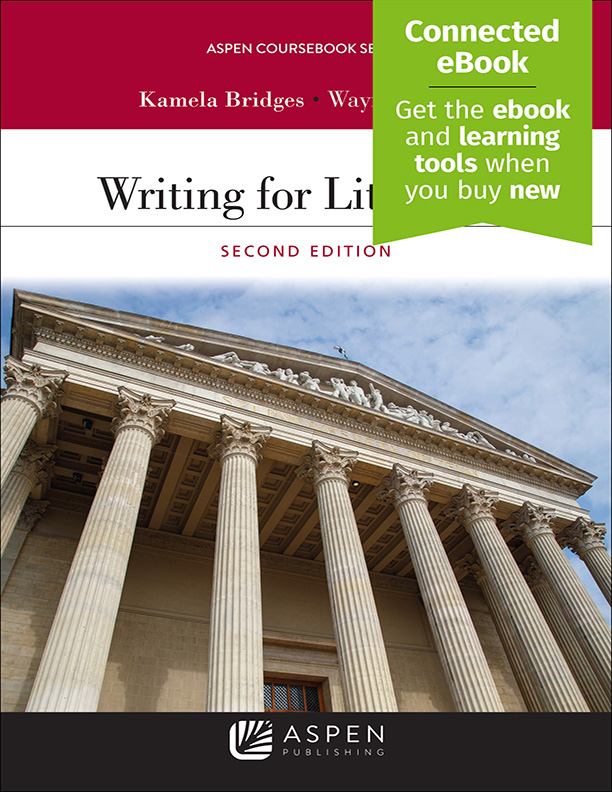
Writing for Litigation
by Kamela Bridges, Wayne Schiess
ISBN-10: 1543809197
ISBN-13: 9781543809190
$106.00
Book Specs
Trade Paper
Wolters Kluwer
Published on
Feb 2, 2020
Edition
2nd Edition
Dimensions
7.00x0.62x10.00 Inches
Weight
1.05 Pounds
About the Book
Writing for Litigation, Second Edition, explains and shows students how to draft litigation documents like a lawyer. Because litigation practice can't be boiled down to just a few forms, this text provides drafting instruction for the full range of documents used in litigation practice. Authors Kamela Bridges and Wayne Schiess systematically address how audience, purpose, strategy, and ethics factor into the content and tone of effective legal writing at every stage of a case--from client engagement letters to motions, discovery, affidavits, and jury instructions. Students will develop an understanding of the tone and content appropriate to their strategic objectives and their audience. The authors' backgrounds in legal practice shed light on lawyering skills in Practice Tips throughout the text.
New to the Second Edition:
- Discussion of the ethical principles that govern each type of document, tied to the Model Rules of Professional Responsibility
- Text and examples that reflect the trend toward electronic filing of documents
- Revised treatment of discovery issues that reflect changes to the Federal Rules of Civil Procedure
- Sample e-mail letters to a client and opposing counsel
- How to communicate professionally with text messages
- Updated cover and page design that offer a new, modern look and more reader-friendly experience
Professors and students will benefit from:
- Broad coverage of both common documents such as pleadings, discovery requests, and motions; and of ancillary documents such as demand letters, client communications, and affidavits
- Practical tips and advice on strategic legal drafting, writing unambiguously, and diversity sensitivity
- Clear guidance to the component parts of each type of document
- A complete set of sample documents in the Appendix
